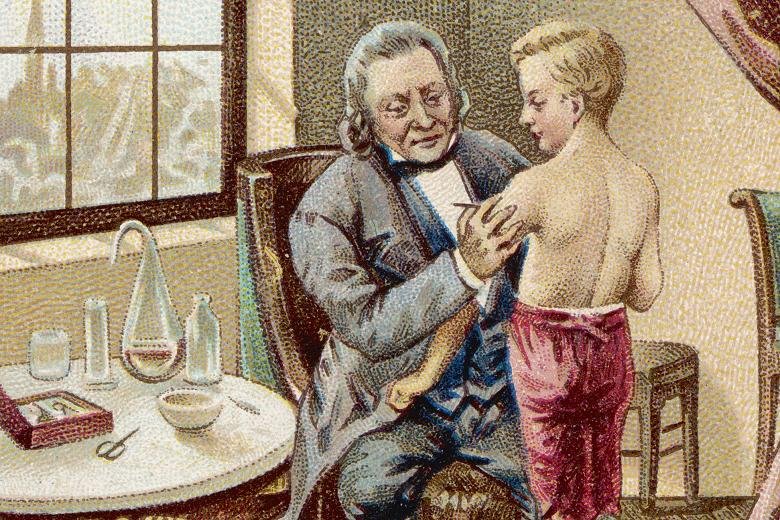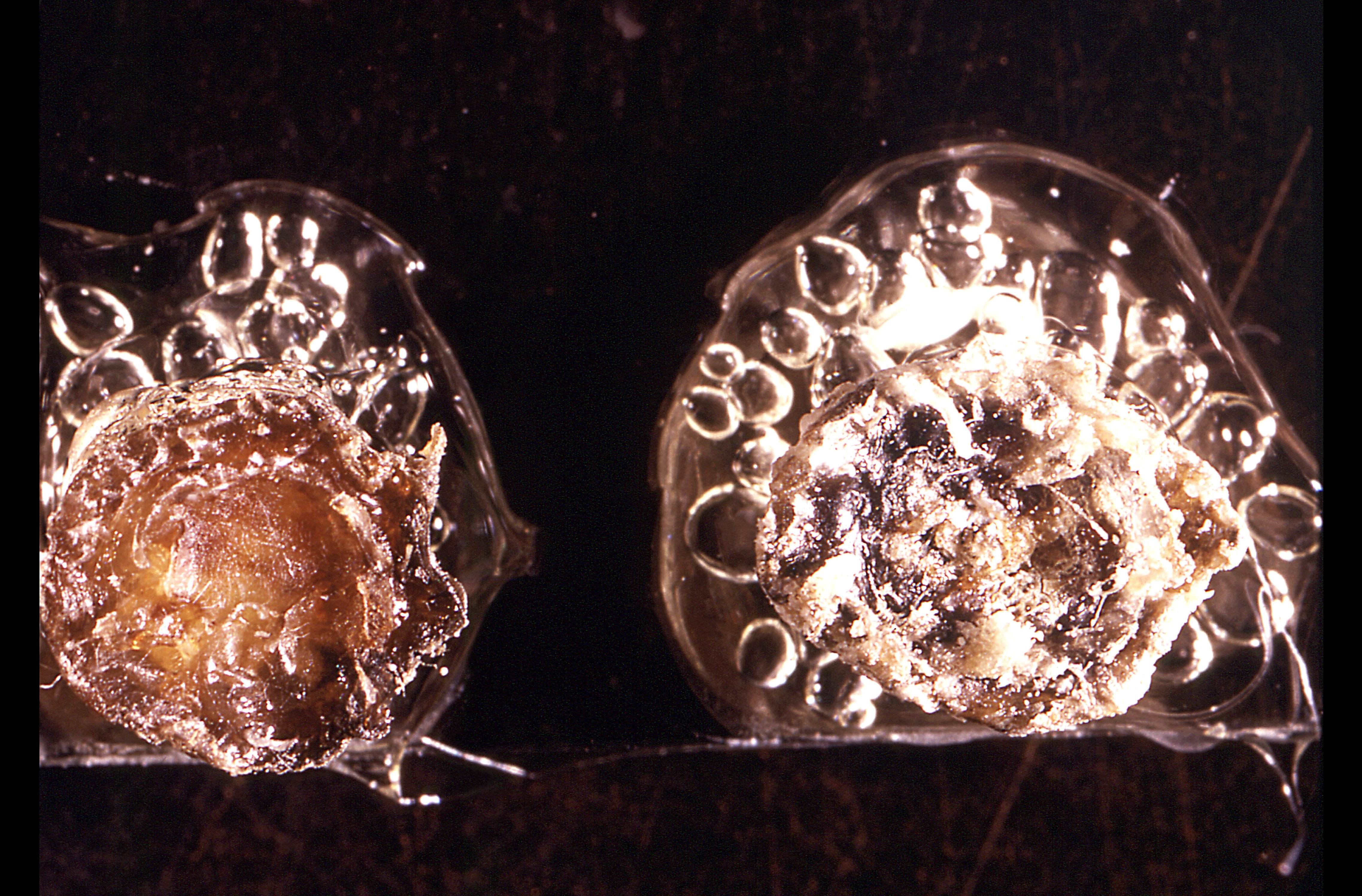Published at 16:20 MST instead of 17:00 MST.
Reason: School
Inoculation
"the act or process or an instance of inoculating; especially: the introduction of a pathogen or antigen into a living organism to stimulate the production of antibodies"[1]
Imagine living in the 1700's while smallpox was rampant and something you had to worry about every single day. Now imagine living back then knowing of a practice to create immunity to it, by first getting it. You read that correctly, they used to infect themselves with smallpox directly because if you are infected with it and survive than if you get it again it won't be as bad. Even today people do this method of immunization (pox party anyone?) and believe it or not but this was dangerous (an average of 150 children died each year from problems associated with chicken pox[2]) but at the time it was the best that they could do. The procedures of inoculating someone with smallpox were commonly to take the pus or scab from a sore of someone infected and put it in superficial scratches on the person they are giving it to[3]. This method of inoculating smallpox did tend to produce a higher survival rate of smallpox as the symptoms were more mild compared to a full infection if done correctly. We will talk more about inoculations in the [potential] shortcomings of vaccines in part 2.
Edward Jenner: 17/05/1749 to 26/01/1823
Edward Jenner (left) had done something revolutionary in the field of immunology with his cowpox experiment in 1796[4]. His story of how he got there though started in 1763 when he, at the age of 14, became an apprentice to a local surgeon where over a course of 8 years he had been trained in the arts of medicine and surgery[5]. At the age of 21, once he completed his apprenticeship, he had gone to study medicine in London from 1770 to 1773, during which time he was a house pupil of John Hunter[6]. During Jenner's time serving as a pupil to Dr. Hunter he was exposed to a methodology of experimentation over thinking, this lead to Jenner having a passion for doing experiments instead of just postulating potentials. After Jenner had completed his studies in London he had moved back to his hometown. During his time he had heard a rumor about milkmaids not being able to contract smallpox if they had come in contact with cows infected with cowpox.
In 1796 Jenner found a dairymaid infected with cowpox and with matter froms the lesions he inoculated an 8 year old boy named James Phipps[8]. The boy fell ill for around 10 days after which Jenner did the procedure again except with matter from a smallpox lesion and the boy, Phipps, developed no lesions or symptoms.
After this Jenner attempted to publish his data but was rejected at first due to how little evidence he had. As such Jenner repeated this a few times, once even on his 11 month old son, and eventually published his results[4]. Initially Jenner had a large amount of opposition to his discovery, or how he discovered it, for it being unethical but the effectiveness of his discovery was beyond that of other techniques[10]. After the usage of his discovery Jenner decided not to patent his discovery as it would just make it harder and more expensive for people to receive the treatment and as such has been called a gift to the world. In 1840 it was outlawed use other, less effective, preventative techniques such as direct smallpox inoculations. This technique was dubbed, by Jenner, as a vaccine after the Latin term for cow "vacca". Jenner controversially pioneered immunology with his experiment but it should be noted that standards of experimentations today are held to much higher standards and what he did would never be allowed today.
The last naturally naturally occurring case of smallpox was diagnosed on October 26th, 1977 after the WHO went on a campaign to eradicate smallpox. Since Jenner's time, vaccines had gotten better in nearly every way from being stored in glycerin to reduce bacterial infections, flash frozen and powdered to allow it to survive up to 6 months at ambient room temperature, and commercially made to be as pure as possible. Today our smallpox vaccine, if to be issued, has advanced so much that we currently use a new virus called vaccinia as it is related to both smallpox and cowpox but has much milder symptoms meaning they can keep it completely virulent (more on that later). Ultimately the eradication of smallpox is a huge success as smallpox had a mortality rate as high as 35%. With work from the entire international community working together to vaccinate enough of their populations to prevent outbreaks. The United States stopped smallpox vaccination in 1972 and smallpox was officially declared eradicated globally by the world health organization in 1980.
Smallpox has been eradicated, but the etiologic agent is not extinct. The virus continues to exist in freezers in secure facilities at one institution in the United States and another in the Russian Federation.
Whether you are one whom would opt for the destruction of the virus or else to keep small amounts for continues research is up to you. The point is vaccination has seen the eradication of one of the most deadly diseases and now we reap nothing but benefits from not having to worry about it.[11][12][13][14]
The Fight of Smallpox
The fight for smallpox started between 1500BC and 1500AD and lasted until 1980 lasting between 480 years and 3480 years. With all that time for smallpox to plague humans and yet with Edward Jenner's simple findings we were able to eradicate it in less than 200 years. Jenner ultimately found a weapon that was not only crucial to the eradication of smallpox, but something that has reduced rates of measles, polio, rabies, and deaths from tetanus. Today the world would be way different without this simple invention. Think about it, without it we would still have smallpox outbreaks, polio would be rampant in first world and third world countries, measles would still be taking lives each year in first world countries, and being infected with rabies would still be a 100% death sentence. Many in this world owe their lives to vaccines and they may not even know it, whether it be the vaccine they took or the one that someone else took.
Final Note
This is an introduction to the history of vaccines as it can be used to determine how they were produced. The topics in these posts will be built upon in the following posts but at the same time get more and more complex. For further reading on the subject I will provide links to the wikipedia pages beneath references. While I personally do not use the information provided from wikipedia, unless I can verify it with at least a second source to that provided in their own references, I do recommend it to any that want to start to research something as it has a vast source of references listed at the bottom. The main things to look at in this post is inoculation, vaccination, Edward Jenner, and that there is a simple case study of vaccination working to eradicate a disease. Before going too much further into the case study though, I plan to go over how the immune system works, what a vaccine actually is and different types, and finally look at the case study in depth as otherwise it may be a little bit confusing. Thank you all or reading, please leave any feedback you may have!
References
[1] www.merriam-webster.com/dictionary/inoculation
[2] archive.is/bFd0H
[3] broughttolife.sciencemuseum.org.uk/broughttolife/themes/diseases/smallpox
[4] www.bbc.co.uk/history/historic_figures/jenner_edward.shtml
[5] www.britannica.com/biography/Edward-Jenner
[6] www.britannica.com/biography/John-Hunter-British-surgeon
[7] commons.wikimedia.org/wiki/File:Contagious_and_infectious_disease-_measures_for_their_prevention_and_arrest;small_pox(variola);modified_small_pox(varioloid);chicken_pox(varicella);cow_pox(variol%C3%A6_vaccina%C3%A6);vaccination,(14576047638).jpg
[8] www.ncbi.nlm.nih.gov/pmc/articles/PMC1200696/
[9] www.bioedge.org/bioethics/would-jenners-smallpox-experiment-pass-a-research-ethics-committee/11759
[10] www.historylearningsite.co.uk/a-history-of-medicine/edward-jenner/
[11] www.cdc.gov/mmwr/preview/mmwrhtml/00049694.htm
[12] www.npr.org/sections/health-shots/2014/07/08/329847454/smallpox-virus-found-in-unsecured-nih-freezer
[13] www.ncbi.nlm.nih.gov/pmc/articles/PMC1069029/
[14] pixnio.com/science/microscopy-images/smallpox-variola-major/chickenpox-scab-and-smallpox-scab-as-a-demonstration-in-comparative-morphology
Further Reading
Smallpox Vaccine en.wikipedia.org/wiki/Smallpox_vaccine
Edward Jenner en.wikipedia.org/wiki/Edward_Jenner
Inoculation en.wikipedia.org/wiki/Inoculation
Smallpox en.wikipedia.org/wiki/Smallpox











